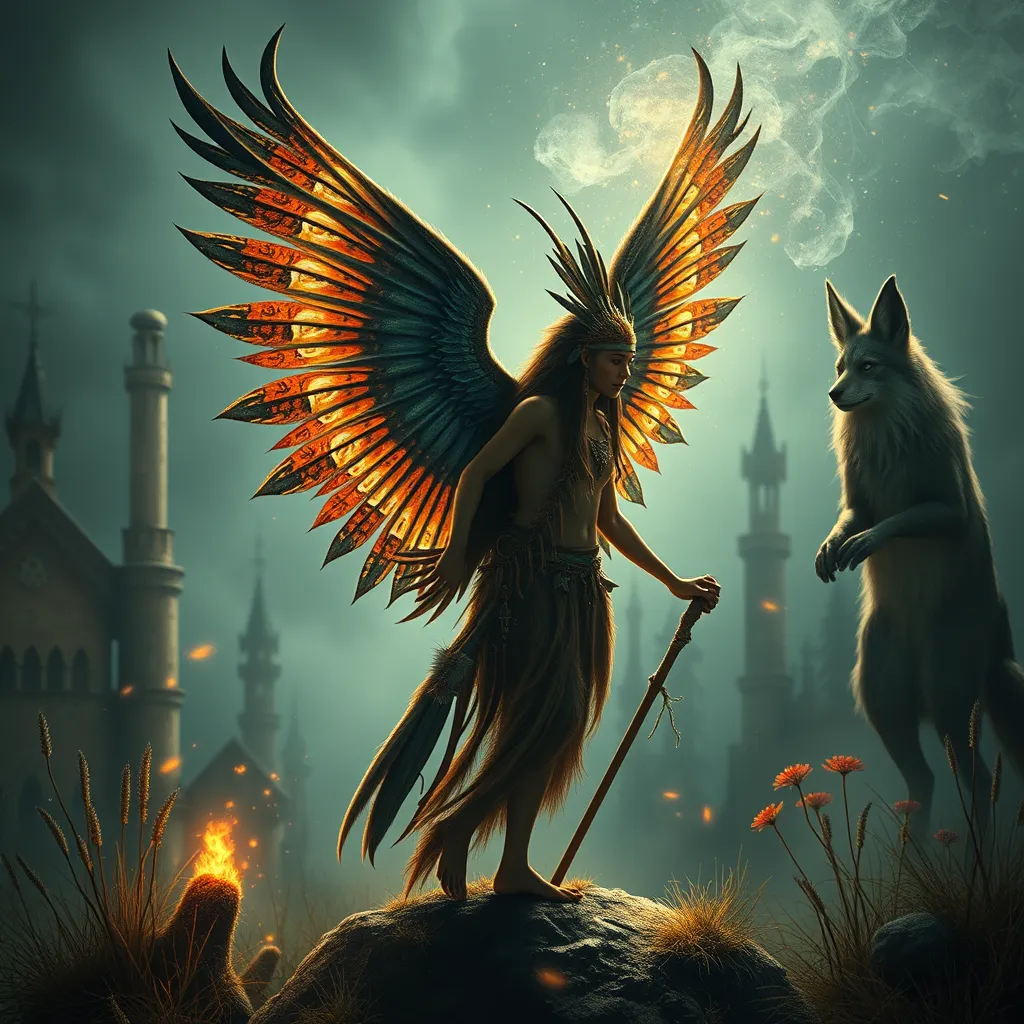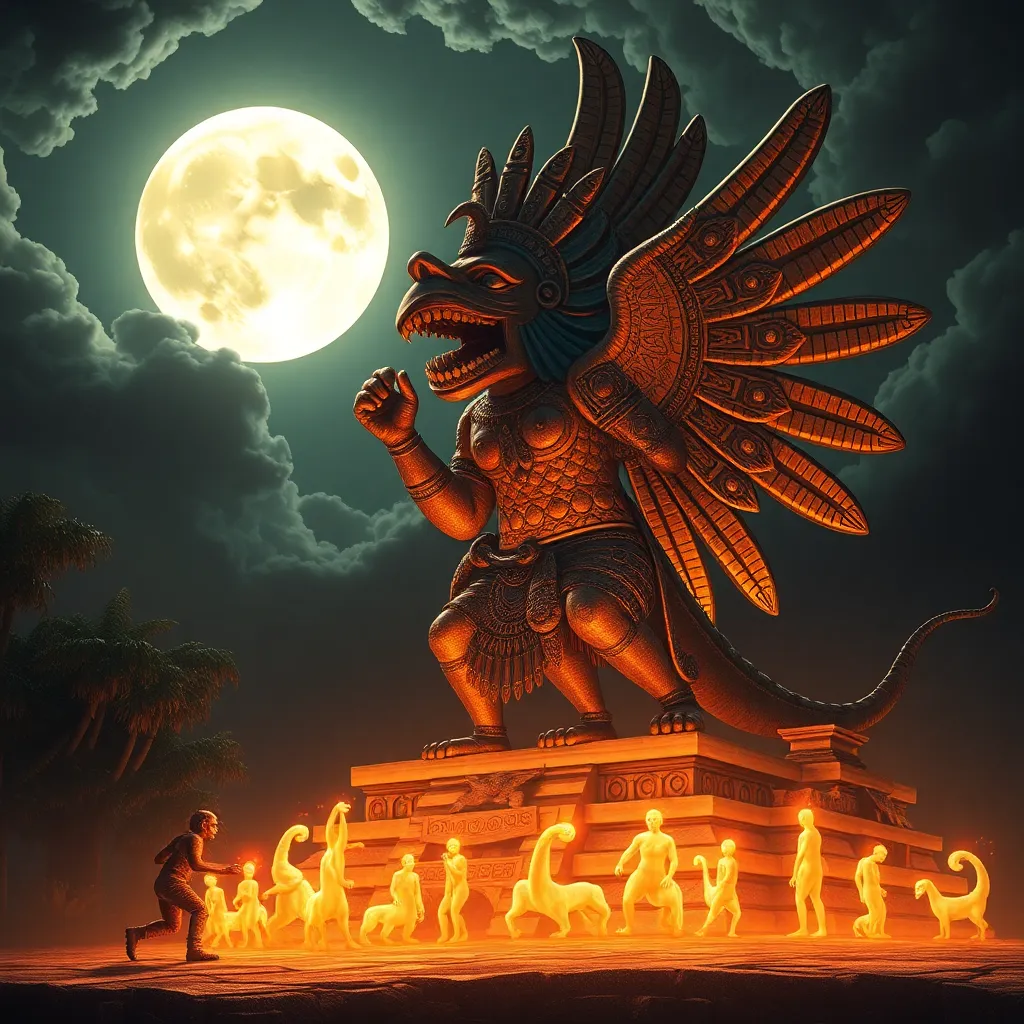The American Native Fairies: From the Thunderbird to the Coyote and the Trickster
I. Introduction
Native American fairies, often intertwined with mythology and spiritual beliefs, serve as vital components of the rich tapestry of indigenous cultures across North America. These mythical beings encompass a wide range of characters, each with their own significance and lessons to impart. From powerful guardians like the Thunderbird to cunning tricksters like the Coyote, these figures embody the values, fears, and aspirations of the communities they originate from.
This article delves into the characteristics and stories of notable Native American fairies and spirits, exploring their roles within the natural world, their cultural significance, and their evolution in contemporary society.
II. The Thunderbird: Guardian of the Skies
The Thunderbird is one of the most revered figures in Native American mythology, regarded as a powerful spirit that commands the sky. Originating from various tribes, such as the Ojibwe and the Lakota, the Thunderbird is often depicted as a massive bird capable of creating thunder and lightning.
A. Origin and mythology surrounding the Thunderbird
According to legend, the Thunderbird is a creature that brings rain and is a protector of the natural order. It is said to reside in the mountains or the sky and is often associated with storms. Many tribes believe that the Thunderbird can create thunder by flapping its wings and lightning by blinking its eyes.
B. Symbolism and attributes associated with the Thunderbird
- Power: The Thunderbird represents immense strength and power, capable of influencing weather patterns.
- Protection: Seen as a guardian spirit, it protects both the land and its inhabitants.
- Balance: The Thunderbird symbolizes the balance between the elements, embodying the harmony of nature.
C. Role in protecting nature and balancing the elements
In many stories, the Thunderbird intervenes during times of imbalance, such as droughts or natural disasters, to restore harmony. This connection emphasizes the importance of respecting nature and its forces within Native American cultures.
III. The Coyote: The Trickster Archetype
In contrast to the grandeur of the Thunderbird, the Coyote embodies the archetype of the Trickster in Native American folklore. As a central figure in many tales, the Coyote is known for his cleverness and cunning nature.
A. Introduction to the Coyote as a central figure in Native American folklore
The Coyote appears in numerous stories across various tribes, often serving as a protagonist or an antagonist whose actions lead to unexpected outcomes.
B. Characteristics and behaviors of the Trickster
- Cunning: The Coyote uses wit and intelligence to navigate challenges.
- Deceptive: Often employs tricks to outsmart others, showcasing the duality of good and bad.
- Transformational: The Coyote’s actions frequently result in significant changes, impacting both himself and those around him.
C. Lessons learned from Coyote’s stories and actions
The tales of the Coyote often convey moral lessons about humility, the consequences of greed, and the importance of balance in life. These stories highlight the complexities of human nature and the importance of self-awareness.
IV. Other Notable Fairies and Spirits in Native American Lore
Beyond the Thunderbird and Coyote, Native American folklore is rich with a variety of fairies and spirits, each holding unique roles and attributes.
A. Overview of various regional fairies and spirits
- Water Spirits: Common among tribes near bodies of water, these spirits often govern aquatic life and are seen as protectors of the water.
- Moon Spirits: Associated with the night and femininity, these spirits often symbolize renewal and transformation.
B. Comparative analysis of their roles and attributes
Each spirit or fairy reflects the environmental elements of their respective regions, demonstrating how closely intertwined Native American lore is with nature. For example, Water Spirits are revered for their life-giving properties, while Moon Spirits are honored for their influence on cycles and growth.
C. Influence of nature and environment on the characteristics of these beings
The characteristics of these beings often mirror the landscapes from which they originate, showcasing the deep connection between Native American spirituality and the natural world.
V. The Intersection of Fairies and Nature
In Native American belief systems, fairies and spirits are not separate from nature; rather, they are integral components of the ecosystem.
A. Relationship between Native American fairies and the natural world
Many fairies are seen as embodiments of natural elements. For example, Earth Spirits might represent fertility and growth, while Fire Spirits could symbolize transformation and destruction.
B. How fairies embody the spirit of elements (earth, air, water, fire)
- Earth: Spirits associated with the ground, plants, and animals.
- Air: Fairies that govern winds and weather patterns.
- Water: Deities of rivers, lakes, and seas.
- Fire: Spirits that represent warmth, light, and destruction.
C. The importance of harmony with nature in Native American cultures
These connections stress the importance of living in harmony with nature, a principle that is foundational to many Native American cultures. Respect for the earth and its spirits fosters a sustainable way of life.
VI. Fairies in Contemporary Native American Culture
As society evolves, so too do the stories and representations of Native American fairies in modern culture.
A. The evolution of fairy tales and folklore in modern storytelling
Contemporary narratives often reinterpret traditional tales, blending ancient wisdom with modern themes to resonate with younger audiences.
B. Representation of fairies in art, literature, and media
Today, Native American fairies are depicted in various artistic mediums, from literature and film to visual arts, reflecting both traditional beliefs and contemporary interpretations.
C. Preservation of traditional beliefs and practices in contemporary society
Despite modern influences, many Native American communities actively work to preserve their folklore and cultural practices, ensuring that the teachings of their ancestors continue to thrive.
VII. Comparative Analysis with Other Cultural Fairies
When examining fairies from a global perspective, similarities and differences emerge between Native American fairies and those from other cultures.
A. Similarities and differences between Native American fairies and those from other cultures
Many cultures feature Trickster figures, akin to the Coyote, while powerful nature spirits can be found globally. However, the specific attributes and narratives often reflect the unique environmental and cultural contexts of each group.
B. Exploration of universal themes found in fairy tales across cultures
- Morality: Lessons about right and wrong.
- Transformation: Change as a central theme.
- Connection to nature: The importance of environmental stewardship.
C. Impact of globalization on the perception of Native American fairies
Globalization has led to a blending of cultural narratives, but it also poses challenges in preserving the authenticity of Native American stories. The representation of these fairies in popular media can sometimes oversimplify or misinterpret their cultural significance.
VIII. Conclusion
The fairies and spirits of Native American lore, including the powerful Thunderbird and the cunning Coyote, play an essential role in the cultural identity of indigenous peoples. Through their stories, these beings convey important lessons about nature, morality, and the balance of life.
The enduring legacy of Native American fairy tales not only enriches the tapestry of global folklore but also serves as a reminder of the importance of cultural preservation and respect for nature. As we continue to explore and appreciate these narratives, we foster a deeper understanding of the values and teachings that have shaped the lives of Native American communities for generations.



